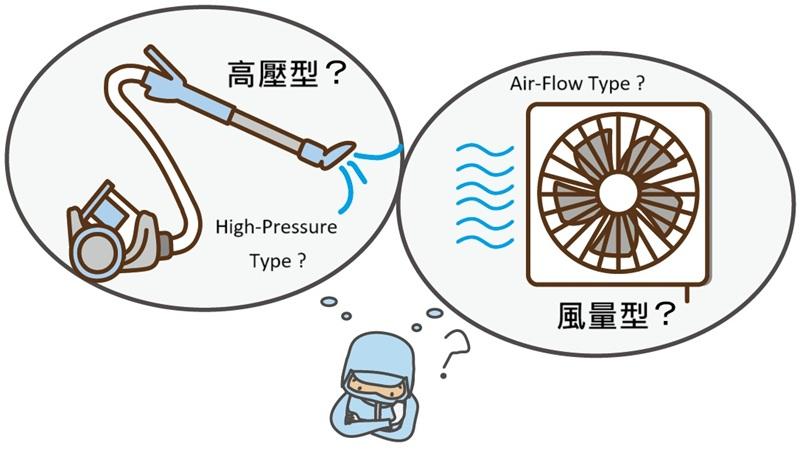
To meet the diverse needs of various industries, CHIKO, as a professional manufacturer of compact dust collectors, has developed more than 20 different models. However, when selecting the most suitable model, the options can generally be classified into two main categories: airflow-type and high-pressure type. Understanding the characteristics of these two types is essential. This article will explain the differences between them, incorporating real application examples.
Differences Between Airflow-Type and High-Pressure Collectors
Airflow-type and high-pressure dust collectors operate with different suction methods. Simply put, an airflow-type collector works like an exhaust fan, drawing in dust through a large volume of airflow; whereas a high-pressure collector works like a vacuum cleaner, using strong suction pressure to pull in dust.
The key difference between the two lies in the characteristics of the blower inside the dust collector. In general, the higher the static pressure along the airflow path, the lower the blower’s airflow output will be. However, this relationship between static pressure and airflow varies depending on the type of blower used.
| The curve that shows the relationship between static pressure and airflow is called the Performance Curve. In the example shown on the right: The red curve represents the performance curve of a high-pressure dust collector. The blue curve represents the performance curve of an airflow-type dust collector. | 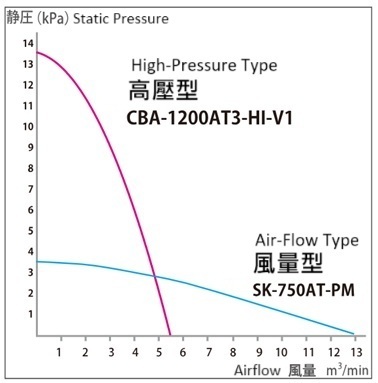 |
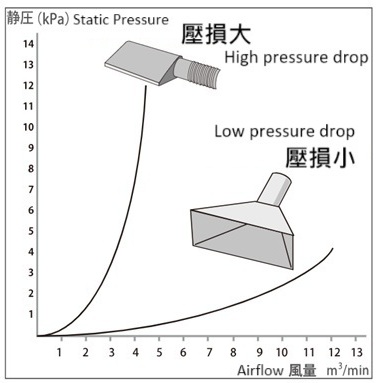 | To determine the actual obtainable airflow, you need not only the performance curve but also the Resistance Curve. A resistance curve shows the relationship between airflow and static pressure as air passes through the ductwork. The greater the airflow, the higher the static pressure, so the curve trends upward to the right. In addition, if there is a greater pressure loss—such as when using narrow ducts—the slope of the resistance curve will be steeper. The intersection point between the performance curve and the resistance curve represents the actual operating point in use. |
| In applications with small pressure losses—such as dust hoods with large openings or ducts with large diameters— when the resistance curve is as shown in the diagram: A high-pressure dust collector (CBA-1200AT3-HI-V1) achieves an airflow of 5.3 ㎥/min, While an airflow-type dust collector (SK-750AT-PM) achieves 8.3 ㎥/min. This shows that under conditions with minimal pressure loss, the airflow-type collector delivers a higher airflow than the high-pressure type. Below is a real-world application example of an airflow-type dust collector. | 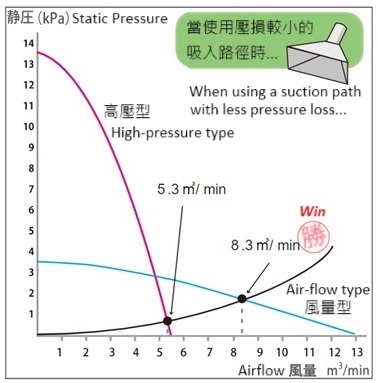 |
| Dust removal in grinding process | Particle blow-off for chips, sensors | Particle removal before packaging |
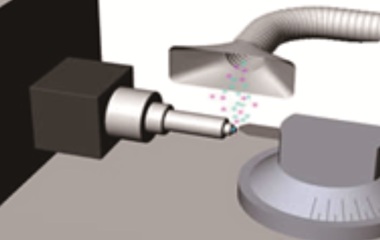 | 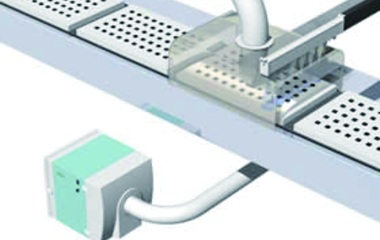 | 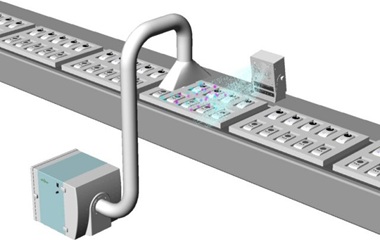 |
| During grinding processes, dust tends to spread over a wide area. To capture dust across such a broad range, a higher airflow is required. From the maximum airflow point on the performance curve, it is clear that airflow-type dust collectors are more suitable for large-area dust collection. | Compared with floating dust, collecting adhered dust requires higher air velocity. Since airflow-type collectors generally have lower air velocity, they are often used in combination with air blow-off, which dislodges dust from the surface before collection. To prevent dust from dispersing during blow-off, enclosed dust hoods are commonly employed. | If the particles to be collected are electrostatically charged, an ionizer is typically used together with the collector. This is because static electricity generates Coulomb forces that prevent the blow-off air from effectively removing the particles from the surface. By first neutralizing the static charge with an ionizer, the blow-off air can then effectively dislodge and collect the dust. |
| In applications with high pressure loss—such as when using slit-type dust hoods or small-diameter dust collection pipes— Let’s illustrate this with the performance curve diagram: when the resistance curve is as shown, The high-pressure dust collector (CBA-1200AT3-HI-V1) delivers an airflow of 2.5 m³/min, While the airflow-type dust collector (SK-750AT-PM) delivers 1.7 m³/min. This demonstrates that under conditions with higher pressure loss, a high-pressure type can achieve greater airflow than an airflow type. Here are some real-world applications of high-pressure dust collectors. | 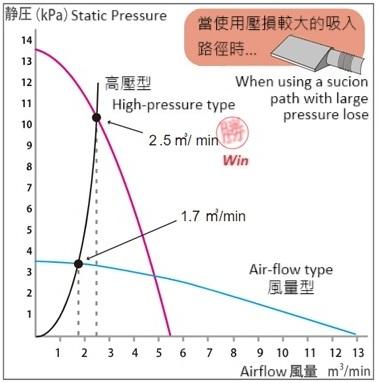 |
| Particle removal from LCD panel surface | Slit-type dust collection on both sides of panel | Dust collection with brush-type nozzle |
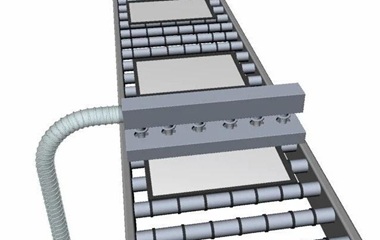 | 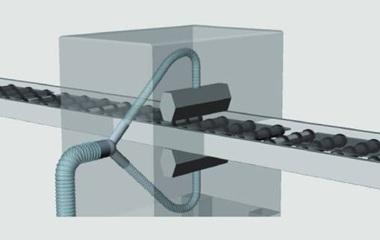 | 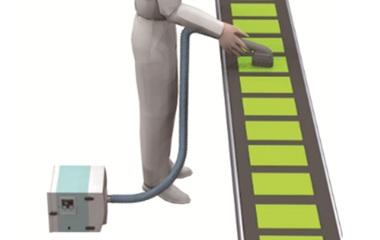 |
| High-pressure models can more easily generate higher air velocities, they are especially suited for collecting adhered dust. Unlike airflow-type collectors, they can often be used without an air blow system. | When used with slit-type nozzles and reduced opening sizes, high-pressure dust collectors can maintain strong air velocity. Even when dust particles are electrostatically charged, they can be collected without an ionizer. | When using small-diameter handheld hoses—where static pressure naturally increases—high-pressure dust collectors can still ensure sufficiently high air velocity for effective dust capture. |
High-pressure or airflow type—still not sure which one you need? No problem—let our professional team assist you.
When selecting the right model, it’s important to consider multiple factors, including the required airflow and the expected pressure loss. With years of accumulated experience, we can recommend the most suitable model for your specific industry and equipment setup.
Feel free to reach out through the inquiry form—we’re here to help.